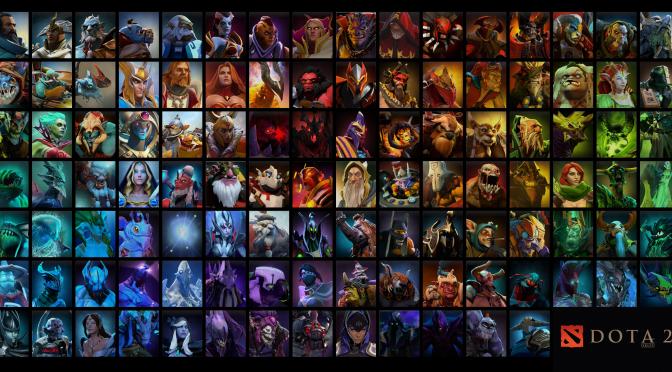But what is it, exactly? Where has it come from and how has all this grown from just one mod? The jury’s still out on whether to call the genre MOBA, for Multiplayer Online Battle Arena, or DOTA, from Defense of the Ancients, one of its origins – and that may be more than a mere turn of phrase if Valve’s move to trademark the word “Dota” ends up going to the courts.
A video games archaeologist dusting off the genre’s genesis would uncover its RTS roots in the StarCraft map, Aeon of Strife. This was a considerably modified map on which, instead indulging in the usual base construction and unit command, each player controlled a single, powerful hero unit. While they still had a base and an army, the AI managed these, spawning and sending waves of units against a similar, opposing base along three different lanes of attack. These lanes were dotted with defensive towers, which the heroes and their armies would have to take down (or defend) before reaching the base proper.
This has caused some to liken the genre to tower defence, but it’s a misleading comparison. Sure, there are towers involved, and you can defend them, but the gameplay is quite different.

In Aeon of Strife, the role of players was neither to micromanage this battle of attrition nor to build any structures, but instead to carefully nudge the balance of the carnage by being in the right place at the right time. By supporting their AI units, players could help them destroy enemy defensive structures and, eventually, the base. The other side’s heroes would be doing the same and often both would clash upon the field of battle.
The core of the game remained the same – RTS-style point-and-click control of a single hero – but now these heroes wielded wildly different abilities, could purchase a variety of different weapons and would level up and gain even more skills. Killing opposing heroes and AI units rewarded a player with both experience and cash – and, of course, during the time that opposing heroes were respawning, their opponents could swing the battle in their favour.

After its release, Eul stopped work on DOTA and other modders stepped in and tried their own versions. The most successful of these was Steve Feak, better known by his bizarre handle: Guinsoo.
Guinsoo developed DOTA: Allstars, a kind of greatest hits mixing the best elements of other DOTA mods and adding his own content. Allstars featured a map dotted with neutral monsters, boasted many heroes and had an overwhelming array of special items, some of which could be combined in recipes to create even more powerful artefacts.
Guinsoo was joined by Steve “Pendragon” Mescon. Still a teenager, Pendragon built the forum that became the backbone of the DOTA community, allowing Allstars players to congregate, to arrange games and, critically, to provide feedback on the game’s tweaks and balancing.
DOTA itself has undergone years of retweaks and reiterations.
After two years, Guinsoo passed the reins to a reclusive modder called Abdul “IceFrog” Ismail. Inspired by the careful weighting of StarCraft and Warcraft, IceFrog endlessly tweaked the balance of the characters and items. While other multiplayer games might add new maps with each release, Allstars instead continued to focus on just one level in an attempt to create a perfectly, precisely honed experience. No combination of heroes or items should outweigh any other; no attribute should become too powerful.
Meanwhile, Pendragon’s forum expanded like nobody’s business, reaching 1.5 million users. Many of these actively participated in the development of the mod by providing additional content or artwork or testing AI bots. As the years rolled on, Allstars became an enormous collaborative project, endlessly rebalanced in an ongoing effort to add new content and perfect what was already included. It became a popular game amongst cyber-athletes, featured at many tournaments around the world, and was even the subject of a song by the Swedish singer Basshunter.
By 2008, after countless mind-bending iterations, DOTA had become something almost unique: a massively successful free game mod created entirely without developer support. The potential to go commercial with a game like this was becoming obvious. In 2009, two independently created DOTA-inspired titles were released. One was an enormous success.
Demigod, from Gas Powered Games, did moderately well, though players complained about its balance and numerous bugs. On the other hand, the free-to-play League of Legends, developed by Riot Games, was very much the spiritual successor to DOTA in both content and execution – and it also built up an enormous player base.

Both Guinsoo and Pendragon had joined Riot, with the latter working to foster the same community spirit that had made DOTA a success. League of Legends hardly touched DOTA’s game mechanics, but it did introduce persistent accounts that allowed its players to gradually unlock more characters to play with, content that Riot has continued to add.
In October 2010, Valve Software announced Dota 2, a heavyweight challenger to LOL from a powerful software house. The announcement was not news to many. IceFrog had said a year before that he was leading a team at Valve and in August 2010 the company had moved to trademark the term ‘DOTA’. It was obvious what was brewing.

Source: http://www.eurogamer.net/articles/2011-08-16-the-story-of-dota-article
